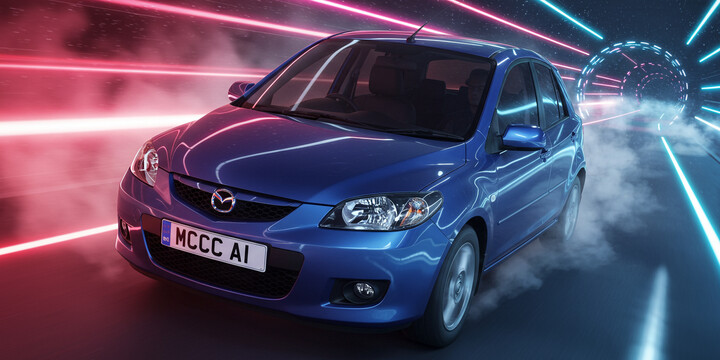
MAZDA 2 (2003-07) 5DR HATCHBACK 1.4 80 TS2 AUTO5
The MAZDA 2 (2003-07) 5DR HATCHBACK 1.4 80 TS2 AUTO5 is a compact and practical hatchback that fits well in the UK city car market. Known for its reliable performance and stylish design, this model appeals to first-time drivers, daily commuters, and small families seeking an affordable, easy-to-handle vehicle. Its 1.4-litre engine offers a good balance of fuel economy and smooth driving, making it cost-effective for urban and suburban use. With its distinctive hatchback shape and straightforward features, the Mazda 2 stands out as a reliable choice in its class.
Used Mazda 2s from this period are often valued for their practicality, affordability, and low running costs, making them popular among budget-conscious drivers. Compared to rivals, this model is celebrated for its solid build quality and nimble handling, ideal for navigating busy streets. The average recorded mileage of around 77,717 miles suggests reasonable usage, while the typical number of previous owners indicates moderate ownership history. Overall, the MAZDA 2 (2003-07) 5DR HATCHBACK 1.4 80 TS2 AUTO5 continues to be a favored option for those seeking a dependable and efficient small car suited for everyday driving needs.

average use

The data indicates a fairly even distribution of most recent mileage recordings for the Mazda 2 (2003-07) 5DR Hatchback 1.4 80 TS2 Auto5 model across several mileage ranges, with each of the 30,000-40,000, 50,000-60,000, 70,000-80,000, and 60,000-70,000 brackets accounting for approximately 12.5% each. Notably, the highest proportion (25%) of recent mileage readings fall within the 90,000-100,000 miles range, suggesting many vehicles in this sample tend to be higher-mileage. The distribution reflects a spread across both lower and higher mileage vehicles, with a tendency towards vehicles closer to 100,000 miles.

vehicle values

The data indicates that the majority of private sale prices for the Mazda 2 (2003-07) 5-door hatchback 1.4 80 TS2 auto fall below £1,000, accounting for 87.5% of the sample. Only a small portion, 12.5%, are sold between £1,000 and £2,000. This suggests that most vehicles of this model tend to be valued at the lower end of the price spectrum in private sales, reflecting their age and perhaps condition or market demand.

production years

The data indicates that among the Mazda 2 models from 2003 to 2007, the majority of the sample—62.5%—were manufactured in 2003, with the remaining 37.5% produced in 2004. This suggests a higher prevalence of 2003 models within the sample, potentially reflecting initial production volumes or market availability during that period. No data is available for the years 2005 to 2007, which could imply that fewer units from those years are present in the dataset or that the model was less common during those later years.

colour popularity

The data indicates that the majority of Mazda 2 (2003-07) 5DR Hatchbacks with a 1.4 80 TS2 Auto5 are painted in Silver, accounting for 75% of the sample. Grey and Blue are both less common, comprising 12.5% each. This suggests that Silver is the dominant colour choice for this model, possibly due to its popularity or availability during production.

ownership cycle

The data shows that the Mazda 2 (2003-07) 5DR Hatchback 1.4 80 TS2 Auto5 has a diverse range of registered keepers. Notably, the most common number of keepers is four, accounting for 37.5% of the vehicles, indicating a tendency for ownership to change hands multiple times. Additionally, vehicles with only one or eight keepers each represent 12.5%, suggesting some cars remain with initial owners or are long-term owners. The distribution reflects a mix of cars with minimal to several ownership transitions, which could be relevant for assessing vehicle history or ownership stability.

engine choices

The data indicates that all Mazda 2 models from 2003 to 2007, specifically the 5-door hatchback 1.4 80 TS2 AUTO5 variant, are equipped with a 1388cc engine capacity. Additionally, the entire sample relies exclusively on petrol as its primary fuel type. This uniformity suggests that the vehicle line maintains consistent specifications across this model range in terms of engine size and fuel, which could be useful for prospective buyers or fleet operators seeking predictability in maintenance and fuel costs.












